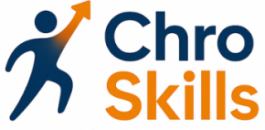
Understanding the Role of a Chief Human Resources Officer
The Pivotal Position within the Organization
Understanding the role of a Chief Human Resources Officer (CHRO) highlights its significance within any organization, especially when it comes to the development of employees and the optimization of workforce effectiveness. The CHRO acts as a bridge between leadership objectives and the human element of a company, spearheading development activities and training courses that align with overarching business strategies. Building a Skilled Workforce A CHRO is tasked with designing and implementing training programs that foster professional development. These programs are essential for equipping team members with the skills necessary for current roles and future responsibilities. From executing employee training initiatives to leading in professional development topics, the CHRO's influence is crucial in curating a learning environment that promotes continuous growth. Leadership and Emotional Intelligence Leadership and emotional intelligence are paramount to the CHRO's role. By nurturing leadership qualities and ensuring effective communication within teams, the CHRO helps in crafting a workplace culture conducive to collaboration and problem-solving. Programs focused on these soft skills, including emotional intelligence and conflict resolution, are invaluable for teams and contribute significantly to workplace harmony. Communication and Engagement Effective communication is another cornerstone of the CHRO's responsibilities. By strengthening communication skills through targeted training courses, the CHRO can help teams operate more cohesively, which is vital for addressing organization-wide issues or managing development ideas. Instructor-led courses can provide team members with the necessary tools for engaging in meaningful dialogue and collaboration across various workplace scenarios. For those interested in mastering the complexities of people leadership, exploring advanced people leadership skills can provide deeper insights into transforming employee development strategies within their organizations.Essential Skills for Effective Staff Development
Mastering Key Competencies for Effective Human Resources Leadership
In today's ever-evolving workplace landscape, the chief human resources officer (CHRO) plays a pivotal role in shaping the professional development pathways within an organization. To ensure the effective growth and development of employees, it's essential to understand the fundamental skills required in this leadership position. These competencies not only help in managing teams but also contribute significantly to the overall success of an organization. One of the foremost skills for any CHRO is effective communication. Cultivating strong communication channels within the workplace fosters an environment where employees feel valued and heard. This is integral to managing employees, facilitating smooth conflict resolution, and promoting collaboration among team members. Another critical skill is emotional intelligence. A CHRO must be adept at understanding and managing their emotions while recognizing and influencing the feelings of others. This ability is crucial for developing strong, positive relationships and ensuring that emotional undercurrents do not affect workplace dynamics. Problem-solving skills are also indispensable. These leaders are often faced with complex challenges and must devise strategic solutions that align with organizational objectives. Engaging in continuous learning and staying updated with contemporary development topics can enhance these capabilities substantially. Leadership and team management are equally important. As CHROs guide their organization through various initiatives, providing clear direction and motivation to their teams is vital. Encouraging team members to participate in vocational development activities and professional development courses supports a culture of learning and growth. By leveraging these skills, HR leaders will significantly impact the implementation of training programs within their organizations. These programs should aim to enhance both soft skills and technical competencies, maximizing professional and personal growth for every employee. For further insights into developing these critical skills, HR leaders can refer to durable resources that provide a deep dive into accountability and leadership within the HR function.Implementing Training and Development Programs
Crafting Effective Training Programs
Implementing successful training and development programs is a cornerstone of staff development. As a Chief Human Resources Officer, understanding the nuances of creating these programs is essential. The goal is to enhance the skills and capabilities of employees, ensuring they are well-equipped to meet the demands of the organization.
To start, identifying the specific needs of your team is crucial. This involves assessing the current skill levels and determining the gaps that need to be filled. Effective communication with team members can provide insights into what areas require focus. Engaging with employees through surveys or feedback sessions can help pinpoint these needs.
Designing Tailored Learning Experiences
Once the needs are identified, the next step is to design training courses that cater to these requirements. This could include a mix of instructor-led sessions, online learning modules, and hands-on workshops. The aim is to create a comprehensive learning experience that addresses various learning styles and preferences.
Incorporating soft skills development, such as emotional intelligence and conflict resolution, is equally important. These skills are vital for fostering a collaborative and productive workplace. By integrating these topics into your training programs, you can enhance the overall professional development of your team.
Implementing and Evaluating Training Programs
After designing the training program, the implementation phase begins. It's important to ensure that all logistical aspects are covered, from scheduling sessions to selecting the right instructors. Additionally, leveraging technology can streamline the process, making it easier for employees to access training materials and track their progress.
Finally, measuring the impact of these programs is crucial. This involves evaluating whether the training has effectively improved employee skills and contributed to the organization's goals. Regular assessments and feedback from participants will help refine future training initiatives.
For more insights on mastering performance standards in HR leadership, consider exploring this resource.
Navigating Change Management
Adapting to Change in the Workplace
In the dynamic landscape of modern organizations, navigating change management is a crucial skill for any Chief Human Resources Officer (CHRO). As businesses evolve, so do the demands on their employees and the skills required to meet these challenges. Effective change management involves not just implementing new processes but also ensuring that employees are equipped to adapt and thrive in a shifting environment.
Building Resilient Teams
One of the primary responsibilities of a CHRO is to foster resilience within teams. This involves developing programs that enhance emotional intelligence and conflict resolution skills among team members. By focusing on these soft skills, HR leaders can help teams navigate the complexities of change with confidence and cohesion.
Effective Communication Strategies
Communication is at the heart of successful change management. CHROs must ensure that there is a clear and open line of communication between management and employees. This involves not only disseminating information about upcoming changes but also actively listening to employee concerns and feedback. Effective communication strategies can significantly reduce resistance to change and foster a more collaborative workplace environment.
Training and Development Programs
Implementing training programs that focus on professional development is essential in preparing employees for change. These programs should include instructor-led courses and development activities that address both technical and interpersonal skills. By investing in employee training, organizations can ensure that their workforce is not only prepared for change but also capable of driving it.
Monitoring and Measuring Success
Finally, measuring the impact of change initiatives is crucial for continuous improvement. CHROs should establish metrics to evaluate the effectiveness of staff development efforts and adjust strategies as needed. This ongoing assessment will help organizations remain agile and responsive to future challenges.
Leveraging Technology in Staff Development
Harnessing Technological Advancements for Employee Growth
The modern workplace demands continuous learning and adaptation from both employees and management. In this dynamic environment, harnessing technology plays a pivotal role in developing skills and fostering growth within an organization. Understanding how to effectively leverage these tools can significantly enhance staff development efforts. Integrating technology into- Training Programs: Online courses and e-learning platforms allow employees to access a wide array of topics at their own pace. These digital platforms provide flexibility and can cater to various learning styles, making them an excellent addition to any training program.
- Development Activities: Virtual simulators and software provide realistic scenarios for employees to practice problem-solving and conflict resolution. These tools will help enhance communication skills and emotional intelligence.
- Instructor-Led Learning: By utilizing technologies like video conferencing, instructors can lead workshops and engage team members from multiple locations, facilitating a collaborative and interactive learning experience.
Measuring the Impact of Staff Development
Assessing Staff Development Outcomes
Measuring the impact of staff development is crucial for ensuring that training and development programs are effectively enhancing the skills and professional growth of employees. This process helps organizations determine if their training investments are yielding the desired outcomes and facilitating continuous learning and development. One essential aspect of evaluating staff development is to clearly define the metrics and criteria that will be used to measure success. Organizations should focus on both quantitative and qualitative data to gain comprehensive insights. For instance, performance metrics, employee feedback, and observational data can all play a role in assessing the effectiveness of training programs.- Performance Metrics: Evaluating changes in employee performance before and after training courses can help identify the actual benefits of the program. Metrics can include productivity rates, sales figures, or quality of work indicators.
- Employee Feedback: Gathering feedback from team members can provide insights into their learning experience and satisfaction with the training. Surveys, focus groups, or one-on-one interviews are effective methods to collect this information.
- Observational Data: Monitoring how employees apply new skills and knowledge in their everyday work environment can help gauge the real-world impact of training initiatives.













